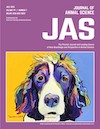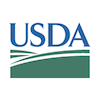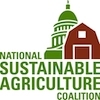-

Jul
16
A Letter From American Red Cross

Thank you so much for hosting the blood drive at your annual conference. 23 donors attempted to donate. We had a fantastic number of first-time donors (13) who came forward. We ended the day at 84% of the hospital pledge with 21 units.
Read more
-

Jul
16
Animal Breeding and Genetics Symposium I
.png?sfvrsn=39c24fd1_0)
Dr. Maltecca's presentation began by introducing how feed costs, amount, and quality of lean products, improving diets, exploiting livestock genetic variability and focusing on individual variation all play a role in producing protein efficiently. His research group focuses on applying the gut microbiome in swine production, with a particular focus on growth and feed efficiency.
Read more
-

Jul
16
Comparative Gut Physiology Symposium
.png?sfvrsn=d7c24fd1_0)
The 2021 ASAS Comparative Gut Physiology Symposium focused on the integration of parents and offspring in the promotion, evaluation, and improvement of gut health. Overall, the speakers agreed that there are very defined times in young animal lives, before and after birth, when an intervention can improve, or in some cases, decrease their potential for health and productivity.
Read more
-

Jul
16
Teaching/Undergraduate and Graduate Education Symposium
.png?sfvrsn=36c14fd1_0)
Genomics is a rapidly expanding field that requires unique education to use knowledge from quantitative genetics. However, it is challenging to provide education to meet the needs of the rapid genomic revolution particularly with limited funding, faculty, and expertise. In the early 2000s, the USDA defined a need for solid infrastructure to deliver information about advances in animal genetics.
Read more
-

Jul
16
SSASAS: SCC 81 Symposium
.png?sfvrsn=b1c24fd1_0)
Dr. Christine B. Navarre presented the first talk about “Best Management Practices for Parasite Control in Beef Herds in the Southeastern United States”. Recently, it has been difficult to create a parasite control program as the ability of cattle dewormers has been worsening overtime. Since there are no new products in development, a new way of managing parasites is needed to slow down resistance.
Read more
-

Jul
16
Physiology and Endocrinology Symposium
.png?sfvrsn=5ac14fd1_0)
Dr. Spicer began by discussing how reproductive efficiency is one of the main factors affecting profitability in farm animals and how the overall goal is to improve reproductive efficiency. Understanding the mechanisms that control ovarian follicular development may lead to ways to improve reproductive efficiency.
Read more
-

Jul
16
Companion Animals Symposium I
.png?sfvrsn=92c24fd1_0)
Nora Bello of Kansas State presented a riveting discussion focused on “Statistics for Reproducible Research in Companion Animal Nutrition”. The major topics of the discussion explored current understanding of P-values and hypothesis testing with a lens of companion animal nutrition and the associated argument that statistical analyses must be fully understood by the user.
Read more
-

Jul
16
Ruminant Nutrition Symposium II

The Ruminant Nutrition Symposium II began with Dr. Daniel Loy reviewing the past forty years of the cattle industry in the Midwest. The industry consistently deals with change; technology advancements (adoption), black swan events (reaction), and disruptive technologies.
Read more
-

Jul
15
The Evolution and Application of Information Technology to Assist with Animal Production Analytics
fb4c2d897d8c62e581bfff00009094bd.png?sfvrsn=71c04fd1_0)
The symposium focused on “The Evolution and Application of Information Technology to Assist with Animal Production Analytics” and was introduced by Luis O. Tedeschi, PhD from Texas A&M University. The Nation Animal Nutrition Program (NANP) was established in 2010 to support research requested by stakeholders. It addresses challenges in research, education, and teaching, and supports agencies in animal agriculture.
Read more
-

Jul
08
Accreditation of BS Animal Science Programs continues to move forward

The National Meetings will provide an opportunity for attendees to learn the latest steps taken towards implementation of voluntary accreditation for BS degree Animal Science programs.
Read more
-

Jul
01
ASAS Journals earn highest impact factors in journals histories for 2020

American Society of Animal Science Journals earned large Impact Factor increases, led by Animal Frontiers, 5.304 (co-published by ASAS, EAAP, AMSA, CSAS, and WAAP) and Journal of Animal Science, 3.159, according to Clarivate’s annual Journal Citation Report (JCR) for 2020.
Read more
-

Jul
01
Interpretive Summary: Genetic parameter estimations and genomic insights for teat and udder structure in young and mature Canadian Angus cows

Devani et al. (2021) recently published a study, in the Journal of Animal Science, that used genome-wide association study (GWAS) to estimate the genetic correlation between young and mature teat and udder scores to determine if these traits are influenced by the same genes.
Read more
-

Jun
28
Washington Roundup - June 2021 - By Lowell Randel

On June 25th, the House Agriculture Appropriations Subcommittee met to consider its version of agriculture appropriations for fiscal year 2022.
Read more
-

Jun
28
Animal Research Working Group Releases Report

The National Institutes of Health’s (NIH) Advisory Committee to the Director (ACD) Working Group was charged with assessing and making recommendations to enhance the rigor, transparency, and translatability in animal research by improving the experimental design, optimizing translational validity, enhancing training, and increasing the transparency of research studies involving animal models.
Read more
-

Jun
28
Additional Aid to USDA Pandemic Assistance for Producers Initiative

The United States Department of Agriculture (USDA) Secretary of Agriculture Tom Vilsack announced supplementary assistance for farmers, ranchers, and agricultural businesses as part of the USDA Pandemic Assistance for Producers Initiative.
Read more
-

Jun
28
Letter Recommending Low-Fat Flavored Milk in Schools Sent to USDA

The United States Department of Agriculture (USDA) Secretary of Agriculture Tom Vilsack recently received a letter from Joe Courtney (D-CT), Glenn ‘GT’ Thompson (R-PA), and 55 other members of Congress supporting the increase of dairy consumption in children by allowing schools to offer low-fat, flavored milk as part of school meals programs.
Read more
-

Jun
28
Letter Sent to USDA for Clarification on Tax Policy Impact on Farmers

President Joe Biden released his American Families Plan, designed to grow the middle class, expand the benefits of economic growth to all Americans, and leave the United States more competitive.
Read more
-

Jun
28
Meat Packing Special Investigator Act Introduced

The Meat Packing Special Investigator Act was recently announced by Senators Jon Tester (D-MT), Chuck Grassley (R-IA), and Mike Rounds (R-SD) to address anti-competitive practices in the meat and poultry industries that threaten the nation's food supply and national security.
Read more
-

Jun
28
No Land Grab Act of 2021 and 30x30 Termination Act Introduced

Two bills that push back against President Biden’s 30x30 Executive Order have been introduced in the House and Senate.
Read more
-

Jun
28
Organizations Urge Congress to Invest in Climate-Focused Ag Improvements

Over 450 conservation, consumer, farm, and environmental groups have collaborated on a letter sent to Senate Majority Leader Chuck Schumer, Senate Minority Leader Mitch McConnell, Speaker of the House Nancy Pelosi, and House Minority Leader Kevin McCarthy requesting Congress to allocate $200 billion in new funding over the next 10 years to increase farm bill conservation, research, renewable energy, forestry, and regional food system and supply chain resilience programs, as well as the agriculture, forestry, and rural-related elements already contained in President Biden’s American Jobs Plan.
Read more
 JulA Letter From American Red Cross
JulA Letter From American Red Cross Thank you so much for hosting the blood drive at your annual conference. 23 donors attempted to donate. We had a fantastic number of first-time donors (13) who came forward. We ended the day at 84% of the hospital pledge with 21 units.
Thank you so much for hosting the blood drive at your annual conference. 23 donors attempted to donate. We had a fantastic number of first-time donors (13) who came forward. We ended the day at 84% of the hospital pledge with 21 units. JulAnimal Breeding and Genetics Symposium I
JulAnimal Breeding and Genetics Symposium I.png?sfvrsn=39c24fd1_0) Dr. Maltecca's presentation began by introducing how feed costs, amount, and quality of lean products, improving diets, exploiting livestock genetic variability and focusing on individual variation all play a role in producing protein efficiently. His research group focuses on applying the gut microbiome in swine production, with a particular focus on growth and feed efficiency.
Dr. Maltecca's presentation began by introducing how feed costs, amount, and quality of lean products, improving diets, exploiting livestock genetic variability and focusing on individual variation all play a role in producing protein efficiently. His research group focuses on applying the gut microbiome in swine production, with a particular focus on growth and feed efficiency. JulComparative Gut Physiology Symposium
JulComparative Gut Physiology Symposium.png?sfvrsn=d7c24fd1_0) The 2021 ASAS Comparative Gut Physiology Symposium focused on the integration of parents and offspring in the promotion, evaluation, and improvement of gut health. Overall, the speakers agreed that there are very defined times in young animal lives, before and after birth, when an intervention can improve, or in some cases, decrease their potential for health and productivity.
The 2021 ASAS Comparative Gut Physiology Symposium focused on the integration of parents and offspring in the promotion, evaluation, and improvement of gut health. Overall, the speakers agreed that there are very defined times in young animal lives, before and after birth, when an intervention can improve, or in some cases, decrease their potential for health and productivity. JulTeaching/Undergraduate and Graduate Education Symposium
JulTeaching/Undergraduate and Graduate Education Symposium.png?sfvrsn=36c14fd1_0) Genomics is a rapidly expanding field that requires unique education to use knowledge from quantitative genetics. However, it is challenging to provide education to meet the needs of the rapid genomic revolution particularly with limited funding, faculty, and expertise. In the early 2000s, the USDA defined a need for solid infrastructure to deliver information about advances in animal genetics.
Genomics is a rapidly expanding field that requires unique education to use knowledge from quantitative genetics. However, it is challenging to provide education to meet the needs of the rapid genomic revolution particularly with limited funding, faculty, and expertise. In the early 2000s, the USDA defined a need for solid infrastructure to deliver information about advances in animal genetics. JulSSASAS: SCC 81 Symposium
JulSSASAS: SCC 81 Symposium.png?sfvrsn=b1c24fd1_0) Dr. Christine B. Navarre presented the first talk about “Best Management Practices for Parasite Control in Beef Herds in the Southeastern United States”. Recently, it has been difficult to create a parasite control program as the ability of cattle dewormers has been worsening overtime. Since there are no new products in development, a new way of managing parasites is needed to slow down resistance.
Dr. Christine B. Navarre presented the first talk about “Best Management Practices for Parasite Control in Beef Herds in the Southeastern United States”. Recently, it has been difficult to create a parasite control program as the ability of cattle dewormers has been worsening overtime. Since there are no new products in development, a new way of managing parasites is needed to slow down resistance. JulPhysiology and Endocrinology Symposium
JulPhysiology and Endocrinology Symposium.png?sfvrsn=5ac14fd1_0) Dr. Spicer began by discussing how reproductive efficiency is one of the main factors affecting profitability in farm animals and how the overall goal is to improve reproductive efficiency. Understanding the mechanisms that control ovarian follicular development may lead to ways to improve reproductive efficiency.
Dr. Spicer began by discussing how reproductive efficiency is one of the main factors affecting profitability in farm animals and how the overall goal is to improve reproductive efficiency. Understanding the mechanisms that control ovarian follicular development may lead to ways to improve reproductive efficiency. JulCompanion Animals Symposium I
JulCompanion Animals Symposium I.png?sfvrsn=92c24fd1_0) Nora Bello of Kansas State presented a riveting discussion focused on “Statistics for Reproducible Research in Companion Animal Nutrition”. The major topics of the discussion explored current understanding of P-values and hypothesis testing with a lens of companion animal nutrition and the associated argument that statistical analyses must be fully understood by the user.
Nora Bello of Kansas State presented a riveting discussion focused on “Statistics for Reproducible Research in Companion Animal Nutrition”. The major topics of the discussion explored current understanding of P-values and hypothesis testing with a lens of companion animal nutrition and the associated argument that statistical analyses must be fully understood by the user. JulRuminant Nutrition Symposium II
JulRuminant Nutrition Symposium II The Ruminant Nutrition Symposium II began with Dr. Daniel Loy reviewing the past forty years of the cattle industry in the Midwest. The industry consistently deals with change; technology advancements (adoption), black swan events (reaction), and disruptive technologies.
The Ruminant Nutrition Symposium II began with Dr. Daniel Loy reviewing the past forty years of the cattle industry in the Midwest. The industry consistently deals with change; technology advancements (adoption), black swan events (reaction), and disruptive technologies. JulThe Evolution and Application of Information Technology to Assist with Animal Production Analytics
JulThe Evolution and Application of Information Technology to Assist with Animal Production Analyticsfb4c2d897d8c62e581bfff00009094bd.png?sfvrsn=71c04fd1_0) The symposium focused on “The Evolution and Application of Information Technology to Assist with Animal Production Analytics” and was introduced by Luis O. Tedeschi, PhD from Texas A&M University. The Nation Animal Nutrition Program (NANP) was established in 2010 to support research requested by stakeholders. It addresses challenges in research, education, and teaching, and supports agencies in animal agriculture.
The symposium focused on “The Evolution and Application of Information Technology to Assist with Animal Production Analytics” and was introduced by Luis O. Tedeschi, PhD from Texas A&M University. The Nation Animal Nutrition Program (NANP) was established in 2010 to support research requested by stakeholders. It addresses challenges in research, education, and teaching, and supports agencies in animal agriculture. JulAccreditation of BS Animal Science Programs continues to move forward
JulAccreditation of BS Animal Science Programs continues to move forward The National Meetings will provide an opportunity for attendees to learn the latest steps taken towards implementation of voluntary accreditation for BS degree Animal Science programs.
The National Meetings will provide an opportunity for attendees to learn the latest steps taken towards implementation of voluntary accreditation for BS degree Animal Science programs. JulASAS Journals earn highest impact factors in journals histories for 2020
JulASAS Journals earn highest impact factors in journals histories for 2020 American Society of Animal Science Journals earned large Impact Factor increases, led by Animal Frontiers, 5.304 (co-published by ASAS, EAAP, AMSA, CSAS, and WAAP) and Journal of Animal Science, 3.159, according to Clarivate’s annual Journal Citation Report (JCR) for 2020.
American Society of Animal Science Journals earned large Impact Factor increases, led by Animal Frontiers, 5.304 (co-published by ASAS, EAAP, AMSA, CSAS, and WAAP) and Journal of Animal Science, 3.159, according to Clarivate’s annual Journal Citation Report (JCR) for 2020. JulInterpretive Summary: Genetic parameter estimations and genomic insights for teat and udder structure in young and mature Canadian Angus cows
JulInterpretive Summary: Genetic parameter estimations and genomic insights for teat and udder structure in young and mature Canadian Angus cows Devani et al. (2021) recently published a study, in the Journal of Animal Science, that used genome-wide association study (GWAS) to estimate the genetic correlation between young and mature teat and udder scores to determine if these traits are influenced by the same genes.
Devani et al. (2021) recently published a study, in the Journal of Animal Science, that used genome-wide association study (GWAS) to estimate the genetic correlation between young and mature teat and udder scores to determine if these traits are influenced by the same genes. JunWashington Roundup - June 2021 - By Lowell Randel
JunWashington Roundup - June 2021 - By Lowell Randel On June 25th, the House Agriculture Appropriations Subcommittee met to consider its version of agriculture appropriations for fiscal year 2022.
On June 25th, the House Agriculture Appropriations Subcommittee met to consider its version of agriculture appropriations for fiscal year 2022. JunAnimal Research Working Group Releases Report
JunAnimal Research Working Group Releases Report The National Institutes of Health’s (NIH) Advisory Committee to the Director (ACD) Working Group was charged with assessing and making recommendations to enhance the rigor, transparency, and translatability in animal research by improving the experimental design, optimizing translational validity, enhancing training, and increasing the transparency of research studies involving animal models.
The National Institutes of Health’s (NIH) Advisory Committee to the Director (ACD) Working Group was charged with assessing and making recommendations to enhance the rigor, transparency, and translatability in animal research by improving the experimental design, optimizing translational validity, enhancing training, and increasing the transparency of research studies involving animal models. JunAdditional Aid to USDA Pandemic Assistance for Producers Initiative
JunAdditional Aid to USDA Pandemic Assistance for Producers Initiative The United States Department of Agriculture (USDA) Secretary of Agriculture Tom Vilsack announced supplementary assistance for farmers, ranchers, and agricultural businesses as part of the USDA Pandemic Assistance for Producers Initiative.
The United States Department of Agriculture (USDA) Secretary of Agriculture Tom Vilsack announced supplementary assistance for farmers, ranchers, and agricultural businesses as part of the USDA Pandemic Assistance for Producers Initiative. JunLetter Recommending Low-Fat Flavored Milk in Schools Sent to USDA
JunLetter Recommending Low-Fat Flavored Milk in Schools Sent to USDA The United States Department of Agriculture (USDA) Secretary of Agriculture Tom Vilsack recently received a letter from Joe Courtney (D-CT), Glenn ‘GT’ Thompson (R-PA), and 55 other members of Congress supporting the increase of dairy consumption in children by allowing schools to offer low-fat, flavored milk as part of school meals programs.
The United States Department of Agriculture (USDA) Secretary of Agriculture Tom Vilsack recently received a letter from Joe Courtney (D-CT), Glenn ‘GT’ Thompson (R-PA), and 55 other members of Congress supporting the increase of dairy consumption in children by allowing schools to offer low-fat, flavored milk as part of school meals programs. JunLetter Sent to USDA for Clarification on Tax Policy Impact on Farmers
JunLetter Sent to USDA for Clarification on Tax Policy Impact on Farmers President Joe Biden released his American Families Plan, designed to grow the middle class, expand the benefits of economic growth to all Americans, and leave the United States more competitive.
President Joe Biden released his American Families Plan, designed to grow the middle class, expand the benefits of economic growth to all Americans, and leave the United States more competitive. JunMeat Packing Special Investigator Act Introduced
JunMeat Packing Special Investigator Act Introduced The Meat Packing Special Investigator Act was recently announced by Senators Jon Tester (D-MT), Chuck Grassley (R-IA), and Mike Rounds (R-SD) to address anti-competitive practices in the meat and poultry industries that threaten the nation's food supply and national security.
The Meat Packing Special Investigator Act was recently announced by Senators Jon Tester (D-MT), Chuck Grassley (R-IA), and Mike Rounds (R-SD) to address anti-competitive practices in the meat and poultry industries that threaten the nation's food supply and national security. JunNo Land Grab Act of 2021 and 30x30 Termination Act Introduced
JunNo Land Grab Act of 2021 and 30x30 Termination Act Introduced Two bills that push back against President Biden’s 30x30 Executive Order have been introduced in the House and Senate.
Two bills that push back against President Biden’s 30x30 Executive Order have been introduced in the House and Senate. JunOrganizations Urge Congress to Invest in Climate-Focused Ag Improvements
JunOrganizations Urge Congress to Invest in Climate-Focused Ag Improvements Over 450 conservation, consumer, farm, and environmental groups have collaborated on a letter sent to Senate Majority Leader Chuck Schumer, Senate Minority Leader Mitch McConnell, Speaker of the House Nancy Pelosi, and House Minority Leader Kevin McCarthy requesting Congress to allocate $200 billion in new funding over the next 10 years to increase farm bill conservation, research, renewable energy, forestry, and regional food system and supply chain resilience programs, as well as the agriculture, forestry, and rural-related elements already contained in President Biden’s American Jobs Plan.
Over 450 conservation, consumer, farm, and environmental groups have collaborated on a letter sent to Senate Majority Leader Chuck Schumer, Senate Minority Leader Mitch McConnell, Speaker of the House Nancy Pelosi, and House Minority Leader Kevin McCarthy requesting Congress to allocate $200 billion in new funding over the next 10 years to increase farm bill conservation, research, renewable energy, forestry, and regional food system and supply chain resilience programs, as well as the agriculture, forestry, and rural-related elements already contained in President Biden’s American Jobs Plan.



